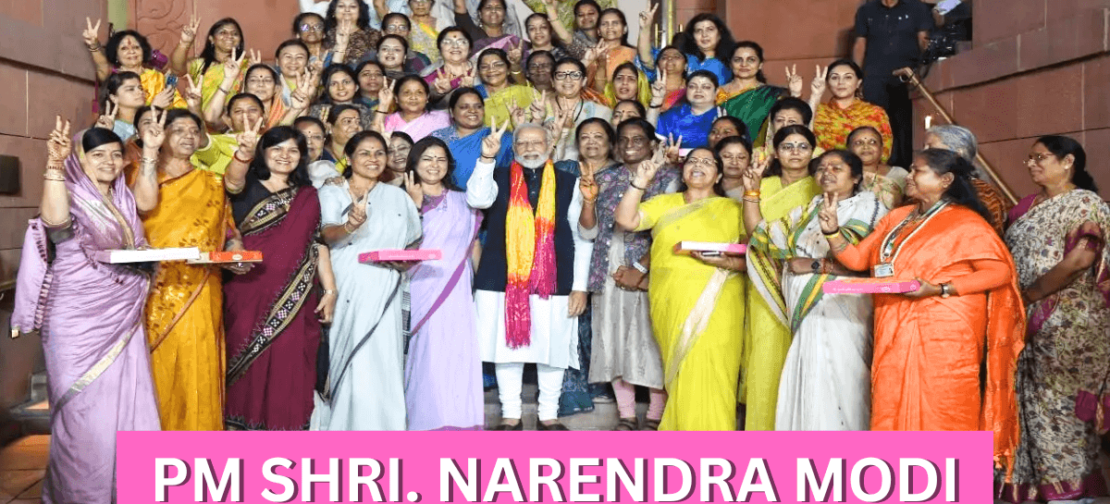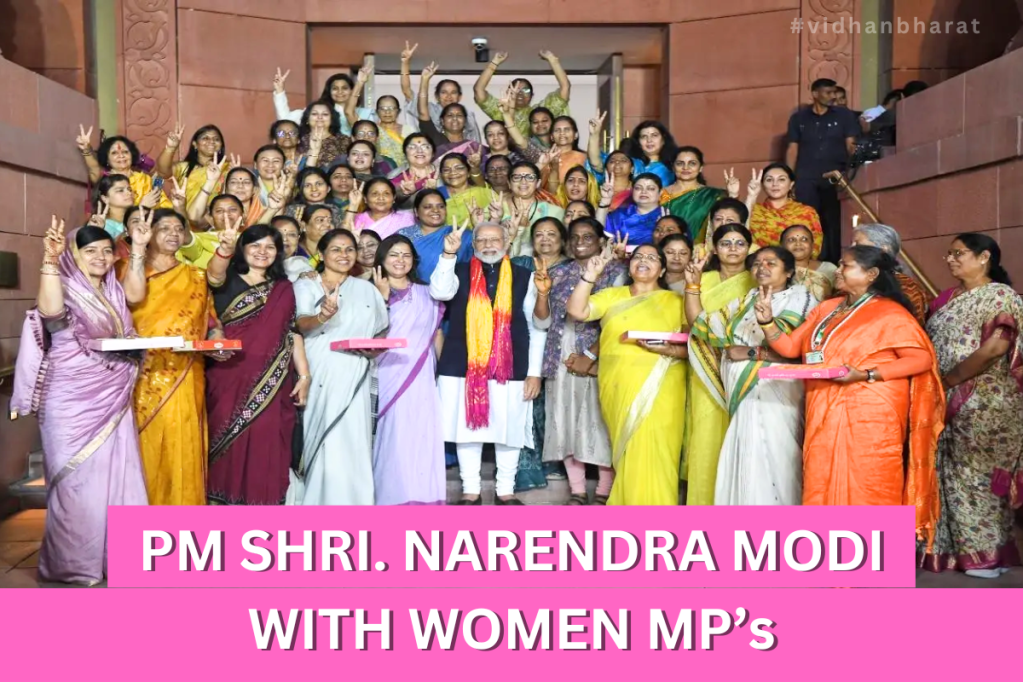
- Home
- About
- Knowledge Center
- Legislative Landscape
- Resources
- #TOGETHERFORBHARA
Decades long debates, discussions and walkouts have finally ended and the status of “The Women’s Reservation Bill” has become the law of the land and officially “The Constitution (One Hundred and Sixth Amendment) Act, 2023”. On the first day of business at the newly constructed Parliament House, the Union Minister of Law and Justice, Shri. Arjun Ram Meghwal tabled the Nari Shakti Vandan Adhiniyam,2023 (also known as the WRB Bill) in the special session of parliament which sought to increase the reservation for women parliamentarians. “Today, women are advancing in all areas. Hence, it’s essential that, in policy making also, our mothers, sisters and womenfolk give their maximum contribution, and play an important role…Today, the 19th of September, is going to become immortal for this reason,” said Prime Minister Shri. Narendra Modi.
Since it was first introduced in 1996, this legislation has gone through six unsuccessful attempts in the years 1996, 1998, 1999, 2002, 2003, and 2008 owing to either the dissolution of the Lok Sabha or the lack of agreement among political parties. Under H. D. Deve Gowda’s Janata Dal-led United Front, this concept was initially introduced as the 81st Constitutional Amendment Bill in 1996 but could not make much headway as the government lacked a clear majority. Two years later, in 1998, the “Bill” was again advanced in the 12th Lok Sabha by the BJP led alliance of Atal Bihari Vajpayee but again failed to get a required majority. Following it, a Joint Parliamentary Committee was set up in 1998, and it presented the final report along with a new draft of the Bill in 1999. All for no gain as the government did not further pursue the Bill. Eventually, after five years, the WRB Bill started to garner support under the Manmohan Singh-led UPA government. In order to keep it from lapsing once more, in 2004, it was first incorporated into the government’s Common Minimum Programme and this time ultimately tabled in the Rajya Sabha on May 6, 2008. On May 9, 2008, the bill was referred to the standing committee for consideration. The report of the standing committee subsequently submitted on December 17, 2009, got Union Cabinet approval in February, 2010 and finally on March 9, 2010, the Rajya Sabha passed the Bill with 186 votes majority. But all these efforts went through the drain as the Bill never saw the light of the day in Lok Sabha during Dr. Manmohan Singh’s government. This time notably, Shri. Narendra Modi led BJP government could timely place this Bill on September 19, 2023 in the Lok Sabha before the upcoming general elections in 2024 and also promisingly got it passed in the Rajya Sabha with full majority on September 21, 2023. Hon’ble President Smt. Droupadi Murmu, gave her assent to the Bill on September 28, 2023. And this is where the historic dissension to the Women’s Reservation Bill ends on a positive note.

The Lok Sabha presently (2023) comprises a total of 542 members, of which 78 are female members. Similarly, the present Rajya Sabha consists of 224 members, with 24 being female members. A total of 102 women parliamentarians are serving as of 2023. The 2023 composition of the Lok Sabha reveals underrepresentation of women Members of Parliament (MPs), constituting less than 15 percent of its members. The gender gap is also more pronounced in state legislatures where the representation of women is less than 10%, such as those in Andhra Pradesh, Arunachal Pradesh, Assam, Goa, Gujarat, Himachal Pradesh, Karnataka, Kerala, Madhya Pradesh, Maharashtra, Manipur, Meghalaya, Odisha, Sikkim, Tamil Nadu, Telangana, Tripura, and Puducherry. However, with the dawn Women’s Reservation Bill 2023, the reservation count is leveled to 181 in Lok Sabha.
The WRB Bill gained the majority with 2/3rd members present and voting which was affirmed later by Shri. Om Birla, Speaker of the Lower House. However, the Bill was opposed by the All India Majlis-E-Ittehadul Muslimeen representatives, who voted against the Nari Shakti Vandan Adhiniyam due to the lack of a quota for the representation of Muslim women and women from the OBC.
The Bill stipulates 33% women’s reservation in Lok Sabha and State Assemblies for a 15-years time period. Further, it also requires the establishment of a quota for members from Scheduled Castes and Scheduled Tribes in the reserved seats in the Legislative Assembly and Parliament. Union Home Minister, Shri. Amit Shah stated in the House that following the elections, a census will be conducted to execute the Women’s Reservation Bill. He further dismissed concerns about a delay in the bill’s execution by stating that the delimitation will be implemented soon after the 2024 Lok Sabha elections by the new government.
Constructive critics of the Nari Shakti Vandan Adhiniyam including Congress, Samajwadi Party, and Rashtriya Janata Dal, argue that the allocation of seats solely to women would disproportionately benefit educated and urban women, leaving out the less fortunate rural women from lower castes. If this challenge is also prudently navigated, the Women’s Reservation Bill will be a golden feather in the hat of Prime Minister Narendra Modi. The first visible proactive step towards women empowerment has been successfully cast, hopefully this will bring about a progressive demonstration of women leadership in prominent fields in India.
